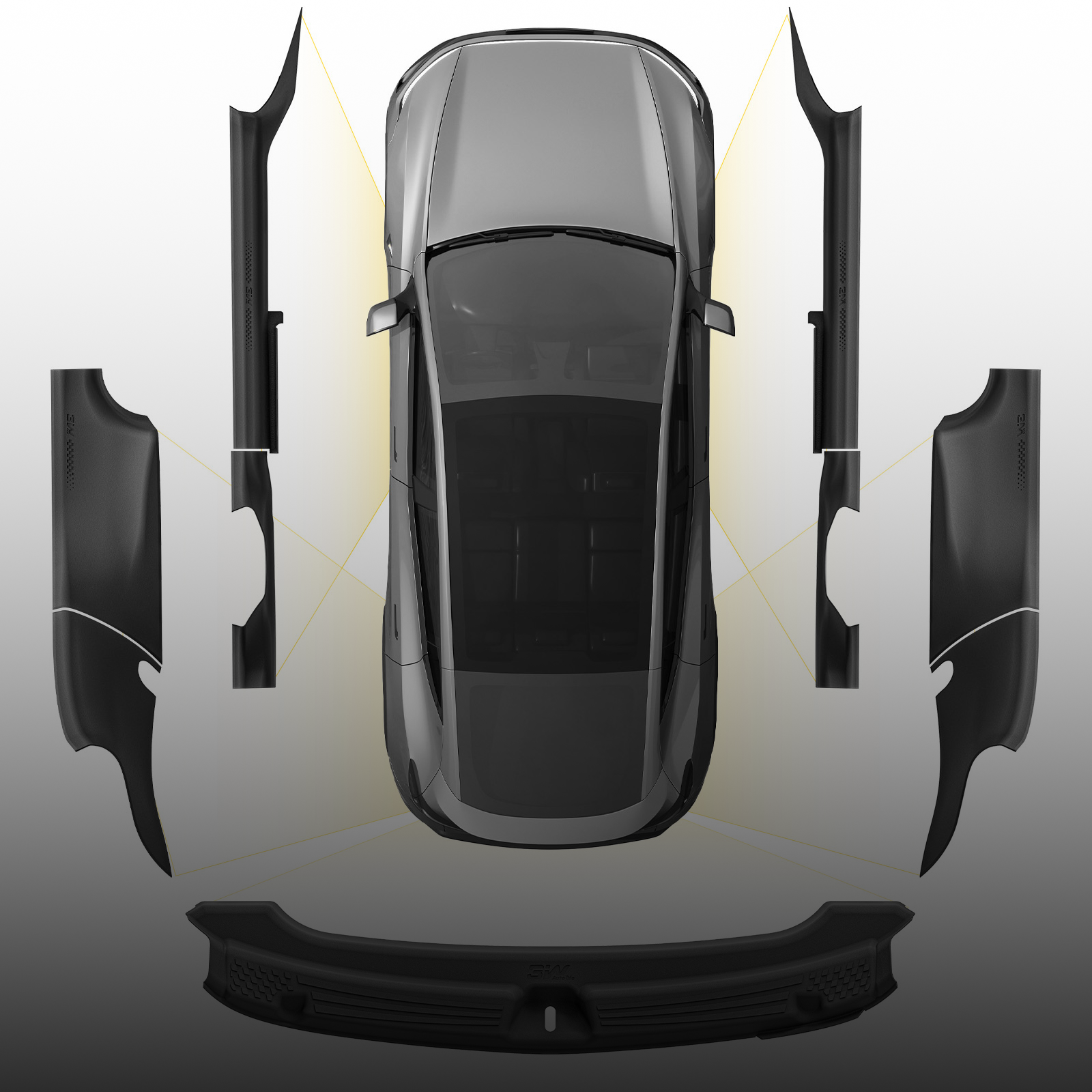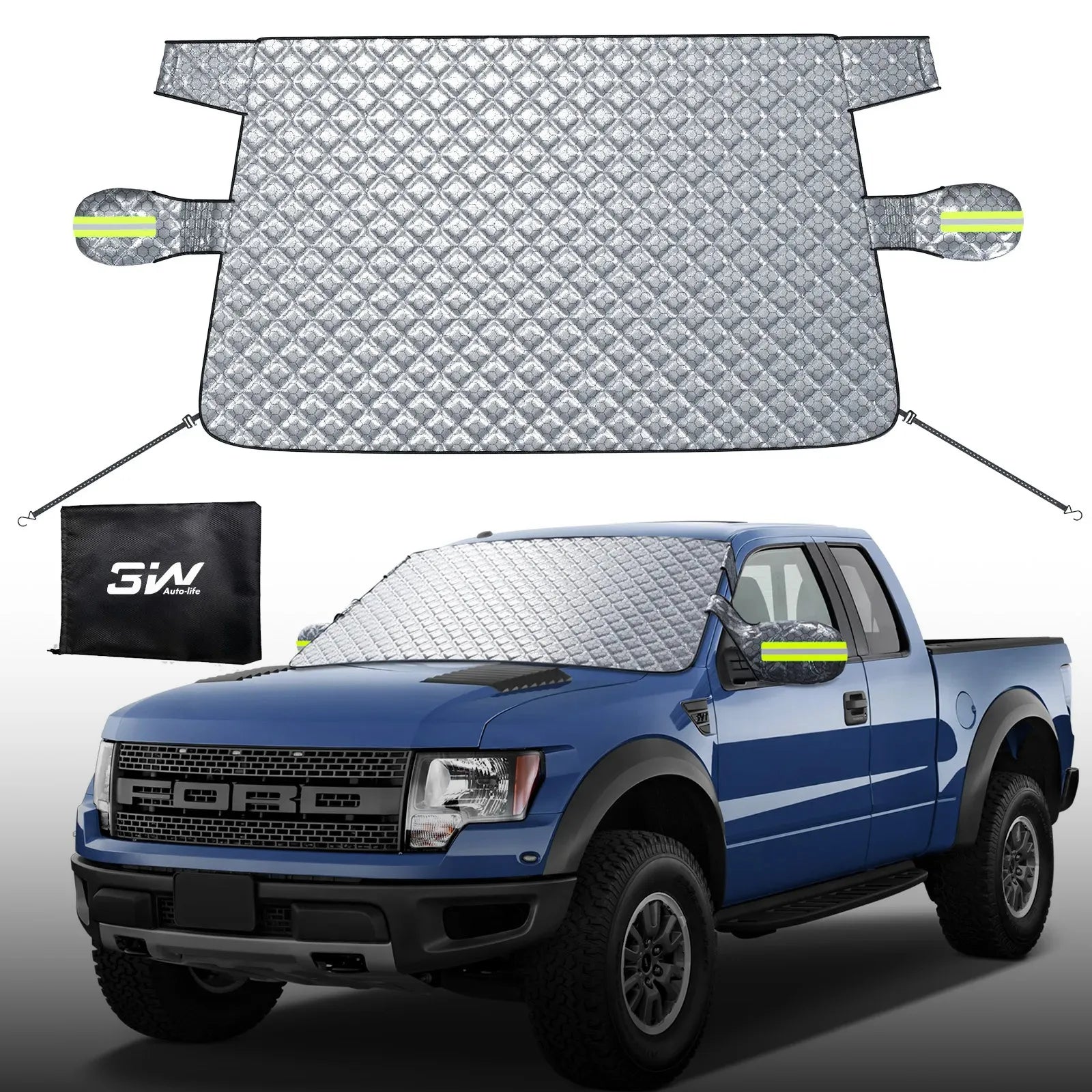

Stepping into the car to be greeted by a lingering and disgusting odor feels like a nightmare. The smell from car floor mats is quite tricky to neutralize. Even spraying air fresheners and leaving windows open can’t repel the odor.
A car floor mat maintains cleanliness by protecting the interior from dirt, spills, and wear. However, the trapped moisture absorbs odors, emitting unpleasant smells. Odorless car floor mats can help you avoid such unwanted messes.
Table of contents
What Causes Odors in Car Mats?
Car floor mats eventually become the primary source of foul odors within the car. Such smells can range from mild mustiness to overpowering chemical scents. Why do car mats develop such odors over time?
01. Moisture and Mold:
Gradual moisture accumulation has been one primary contributor to foul smells. It can come from rain-soaked shoes, spilled drinks, or even high humidity.
- Water seeping into the mat creates a breeding ground for fungi.
- Dampness for months eventually develops mildew spots.
-
Poor ventilation exacerbates moisture retention to worsen the odor.
02. Dirt, Food Crumbs, and Debris: Floor mats also collect dust, food particles, and debris from daily uses. Negligence in cleaning allows contaminants to release unpleasant odors.
- Food crumbs lodged in the mat fibers start decaying.
- Dirt, mud, and road grime, combined with moisture, amplify the smell.
-
Bacteria and fungi thrive in rotting organic materials.
03. Chemical Off-Gassing from Mats: Volatile organic compounds (VOCs) remain extensively present in synthetic rubber and plastic-based mats. They release strong chemical odors mixed with fumes. The resulting smell feels the worst in new and fresh conditions.
- Low-quality rubber or PVC mats emit harmful VOC chemicals.
- Prolonged exposure to heat can worsen the off-gassing effect.
-
Mats made from inferior materials constantly release chemical scents.
04. Pet Hair and Dander Accumulation: Many car owners frequently transport pets, which can accumulate fur and dander. Even pet accidents can contribute to lingering odors on the car mats.
- Pet fur traps moisture and bacteria.
- Accidental spills or pet urine can seep into the mat fabric.
-
Interior warmth intensifies pet-related odors.
05. Residual Spill Stains: Liquids from spilled coffee, soda, or cleaning products leave sticky residues. It may even trigger a chemical reaction that releases odors.
- Sugary drinks promote bacterial growth, leading to sour smells.
- Chemical-based cleaners with strong fragrances can linger.
-
Leftover residues get mixed with dirt to intensify odors.
06. Tar, Oil, and Exhaust Particle Residuals: Car floor mats can even accumulate road tar, oils, or pollutants. It’s more common in high-traffic areas or ridesharing vehicles.
- Mats trap microscopic particles from vehicle exhaust.
- Sticky oil and grease develop a chemical-like odor.
- Road tar mixes with debris to leave a lingering scent.
Why You Must Keep Your Car Fresh and Odor-Free?
Disgusting smells inside the car aren’t exactly limited to annoyance or embarrassment. Bacteria, mold, and mildew can affect air quality to pose health risks.
a. Respiratory Problems – Inhaling mold spores can cause breathing difficulties. Mold spores in confined spaces lead to chronic respiratory conditions [Environmental Protection Agency (EPA)].
b. Allergic Reactions – Dust mites and trapped bacteria can cause sneezing, itchy eyes, and skin irritation. Dust and mold are two primary indoor allergens to induce sinus issues [American Lung Association].
c. Headaches and Fatigue – Long-term exposure to volatile organic compounds (VOCs) is never good. Even mold and bacterial buildup in mats can lead to dizziness (nausea) during longer drives.
The University of Nottingham found that the average car interior holds more bacteria than a toilet seat. And floor mats are the primary breeding ground due to trapped moisture and organic material.
d. Lower Resale Value – A foul-smelling car marks lower prices in the resale market. Almost every buyer associates the odors with hidden damage or poor condition.
e. Rideshare Ratings – Over 60% of rideshare passengers consider ‘vehicle cleanliness’ as a crucial factor in providing feedback. Bad odors in floor mats lead to lower ratings, resulting in fewer ride requests.
Car dealerships employ ozone treatments before reselling vehicles. Unwanted or unpleasant odors can reduce the resale price by 10% to 15%.
What Makes a Car Floor Mat Odorless?
Odorless car floor mats are scientifically designed to prevent odor from the very beginning. Top-quality mats integrate advanced features with smart engineering for zero emissions.
-
Non-Toxic Materials: The best odorless mats feature low-VOC thermoplastic elastomers (TPE), eco-friendly rubber, or polymer blends. Premium floor mats specifically prevent potential off-gassing. Brands prioritize low-VOC certification to guarantee minimal chemical smells.
-
Moisture Resistance and Antimicrobial: No-odor mats resist moisture retention to prevent microbial growth. Antimicrobial mats use silver-ion coatings or microbe-resistant compounds. And rubberized or waterproof mats with deep grooves prevent liquids from pooling.
-
Easy-to-Clean Surfaces: Odorless mats have non-porous surfaces to prevent stains and contaminants. Non-porous polymer mats can resist stains 5x more than traditional carpeted mats. Luxury mats from silicone-based compounds feature self-cleaning surfaces to repel dust and dirt.
- Proper Ventilation: Zero-odor car mats enable sufficient ventilation for air circulation. Mats with heat resistance can prevent unwanted chemical odors. Some premium car mats feature breathable mesh layers that enhance airflow while maintaining freshness in hot climates.
How to Choose the Best Odorless Car Floor Mats?
Spending money on the best odorless car floor mats is a necessity. We’re not talking about avoiding bad smells only. You can harness maximum durability, protection, comfort, and hygiene at once.
01. Material Composition: The material comes first to repel odors. Top-notch mats are made from low-VOC, non-toxic, and buildup-resistant materials. Rubber, thermoplastic elastomers (TPE), and top-grade polymers are popular choices.
Premium TPE car floor mats incorporate long-lasting durability without potential off-gassing. They seem ideal choices for daily commuters and rideshare drivers.
02. Water and Stain Resistance: An odorless mat must possess waterproof and stain-resistant features. No absorption, even during heavy spills, can occur. Waterproof mats with hydrophobic coatings can reduce odor buildup by up to 75%.
Mats with deep grooves or raised edges effectively channel spills away from accumulation. Driving in rainy climates benefits from waterproof mats to repel moisture.
03. Antimicrobial Properties: No-odor mats increasingly incorporate antimicrobial materials. Almost no bacterial growth retains in a cleaner vehicle interior. Such mats prevent mold, fungi, and bacteria from exponential growth.
Silver-ion technology in antimicrobial floor mats can eliminate up to 99.9% of bacteria. Several luxury car brands employ antimicrobial technologies for long-lasting odor resistance.
04. Ventilation for Heat Resistance: Get mats with built-in resistant coatings for ventilation to allow free air circulation. A heat-resistant mat can retain its structural integrity 30% longer than a standard synthetic mat.
Drivers working in hot regions should find breathable mats to maintain a fresh-smelling interior. Don’t forget to figure out UV resistance to further reduce odor-related issues.
05. Easy Cleaning for Maintenance: Regular cleaning of the mat is mandatory to prevent anything from going wrong. Standard odorless mats are easy to clean with faster removal of dirt, spills, and residuals. However, deep cleaning eliminates up to 90% of bacteria for effective odor control.
Non-porous surfaces are easier to maintain in comparison to fabric-based mats. Mats with self-cleaning properties enable superfast wipe-downs for professional and rideshare drivers.
Top Odorless Car Floor Mats on the Market
It’s no longer easy to find the most suitable car floor mats without odor right away. Brands continue to introduce upgraded versions to meet the demands. 3WLiners is one brand with top-quality car mats.
- 3W All-Weather TPE Floor Mats: These mats feature a low-VOC and non-toxic composition. Custom-fit designs use 3D laser measurements for edge-to-edge coverage. The waterproof and stainproof material is also eco-friendly.
The recyclable mat even holds Global Recycled Standard (GRS) certification. All-weather durability is ready to handle extreme conditions. And the entirely wipeable surface takes minimal effort for a complete cleanup.
- 3W Custom-Fit Floor Liners for Tesla: Premium odorless protection is also available for Tesla owners. Top-quality TPE build ensures zero off-gassing. Its custom fit provides edge-to-edge coverage.
Also, the design features weatherproof and pet-friendly characteristics. Non-slip backing enables secure placement. Likewise, the durable material remains easy to clean.
Whether you're facing muddy boots or unexpected spills, 3W Liner mats are designed to protect and impress every mile of the way. It’s more like a long-term investment without worrying about replacements. 3W is ready to deliver to the very end.
How to Clean Odorless Car Floor Mats?
Buying and installing an odorless mat won’t do it alone. Thorough cleaning at regular intervals is a must to retain freshness and longevity.
i. Regular Cleaning
Dust, food particles, and road grime can still accumulate on the mat. Vacuum the mat once a week to remove loose dirt and debris. Shake out daily when possible after outdoor trips. Always use microfiber cloths to wipe down rubber or TPE mats.
ii. Deep Cleaning
Each mat type requires a specific approach for maximum odor resistance. Use mild soap and water for deep cleaning a TPE mat. Scrub with a soft-bristled brush to remove tough stains.
You'd better vacuum thoroughly before applying cleaners to carpeted mats. Use baking soda to absorb lingering odors before vacuuming. Shampoo with enzyme-based cleaners to neutralize bacteria.
iii. Drying Mats
Improper drying can damage the mat, whereas insufficient drying can lead to dampness. Always dry the cleaned mat completely before placing it back in the car. Air-dry in direct sunlight for about 2 to 3 hours. Consider a fan or dehumidifier for indoor drying.
iv. Odor Neutralizing Treatments
Additional precautions can lend a hand in preserving the effectiveness. You can choose natural deodorizing agents to keep the interior fresh.
Sprinkle baking soda overnight to absorb the residual odors. Get a vinegar-water mix for a natural antibacterial cleaning solution. Apply essential oil sprays (lemon or tea tree) for freshness.
v. Seasonal Maintenance
- Rainy/Humid Climates: Regularly wipe the mat surfaces dry after driving. Use some silica gel packs to absorb the extra humidity.
- Snowy Conditions: Remove salt residue with a vinegar-water (warm) mix to prevent stains. Waterproof sprays can enable further moisture resistance.
- Warm Climates: Keep the mats ventilated to prevent heat-induced odor buildup. Choose UV-resistant protectants to reduce wear and tear.
Conclusion
Every stay in your car should feel fresh, clean, and inviting. Odorless car floor mats start by terminating odors and smells. Upgrading your car floor with top-quality mats can instantly make a massive difference. The right choice actively participates in ensuring better air quality, comfort, and long-term cleanliness.
Frequently Asked Questions (FAQs)
- Are odorless car floor mats completely free of chemical smells?
Yes. The best odorless mats don’t emit any kind of strong chemical odors. Some new mats may initially have a mild factory scent.
- Can odorless mats withstand extreme temperatures?
Yes. Most odorless mats are heat-resistant and cold-resistant to a great extent. They won’t warp or emit odors when exposed to high temperatures.
- Do odorless mats provide better grip and traction?
Many odorless mats feature anti-slip textures with reinforced backing. A better grip prevents movement while driving.
- Are odorless mats safe for pets and children?
Yes. The mats are marked as BPA-free and non-toxic. Therefore, car accessories from trusted brands are safe for pets, children, and the elderly.

